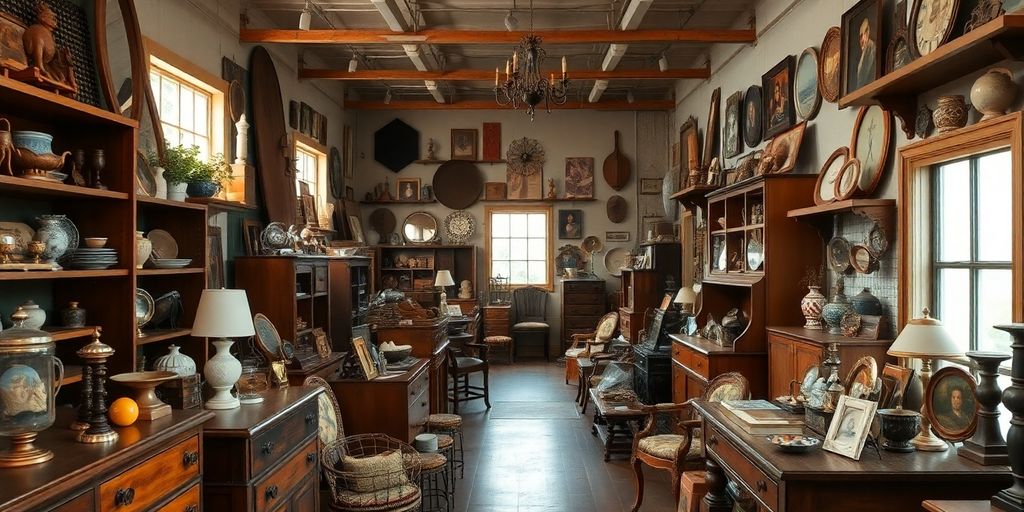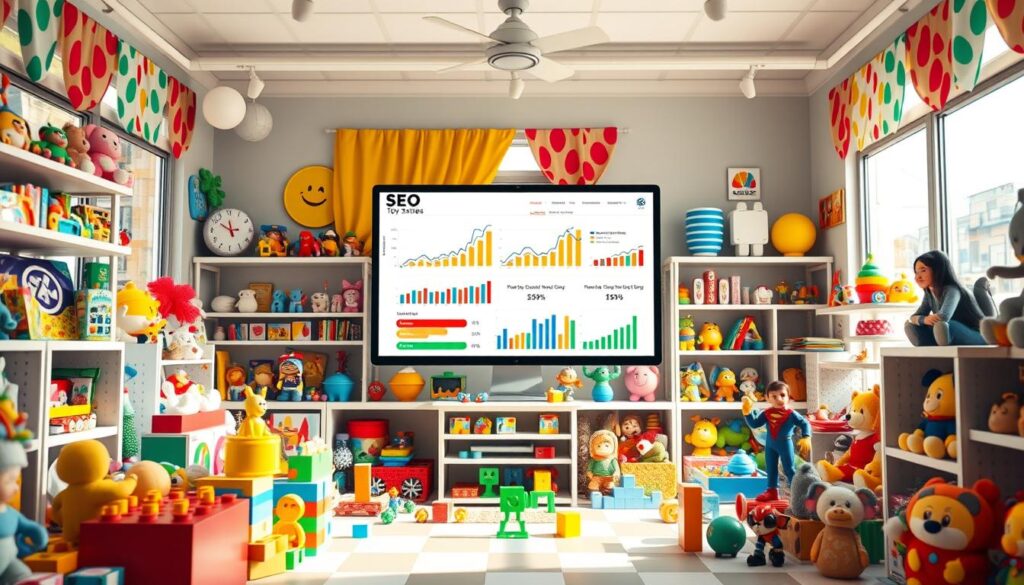SEO, or Search Engine Optimization, is a big deal for antique shops wanting to get noticed online. In today’s digital world, simply having a website isn’t enough. SEO helps antique shops show up when folks search for them online. It’s about using the right words, making your site easy to use, and even getting other sites to link to you. With the right SEO tricks, antique shops can get more visitors and maybe even sell more stuff.
Key Takeaways
- SEO helps antique shops get noticed online by improving search engine rankings.
- Using the right keywords is crucial for attracting potential customers.
- Local SEO is important for drawing in nearby customers and boosting visibility.
- Creating quality content and getting backlinks can significantly enhance SEO efforts.
- Optimizing website design and speed improves user experience and search rankings.
Understanding SEO for Antique Shops
Defining SEO
Search Engine Optimization (SEO) is all about making your website more appealing to search engines. Think of it as a way to get your shop noticed online. By tweaking certain elements of your website, you help search engines like Google understand what your site is about, making it easier for potential customers to find you. SEO isn’t just one thing; it’s a bunch of strategies working together to improve your site’s visibility.
Importance of SEO for Antique Shops
For antique shops, SEO is a game-changer. With so many people starting their buying journey online, having a strong SEO strategy can make all the difference. When your shop ranks higher in search results, you’re more likely to attract visitors who are specifically looking for antiques. This means more foot traffic to your website and, hopefully, more sales. Plus, a good SEO strategy helps build trust with customers, showing them that your shop is reputable and reliable.
Common SEO Misconceptions
There are quite a few myths floating around about SEO. One big misconception is that SEO is a one-time task. In reality, SEO is an ongoing process. Search engines constantly update their algorithms, so you need to keep your strategies fresh. Another myth is that you can trick search engines with keyword stuffing or buying backlinks. These tactics can actually hurt your rankings. It’s important to focus on quality content and genuine engagement with your audience for the best results.
SEO isn’t just a set-and-forget strategy. It’s a continuous effort to stay relevant and visible in the digital world. Keeping your SEO up-to-date means you’re always in the game, ready to catch the eye of potential customers.
Key SEO Strategies for Antique Shops
Keyword Research Techniques
To get started with SEO for your antique shop, you need to dive into keyword research. This means figuring out what words and phrases potential customers are typing into search engines. Think about the specific items you sell and the unique features of your shop. Use tools like Google’s Keyword Planner or even just the search bar’s autocomplete feature to gather ideas. Once you have a list, organize these keywords by relevance and search volume. Remember, targeting long-tail keywords, which are more specific phrases, can often yield better results because they’re less competitive.
Content Creation Best Practices
Creating content is where you can really let your shop’s personality shine. Write blog posts about the history behind popular antiques or create guides on how to care for vintage items. Make sure each piece of content naturally includes your researched keywords. Consistency is key, so aim to post regularly. Additionally, consider different content formats like videos or infographics to keep things fresh and engaging. The goal is to provide value to your visitors, which in turn can help improve your rankings.
Optimizing Titles and Meta Descriptions
Titles and meta descriptions are like your shop’s digital storefront. They need to be inviting and informative. For each page on your website, craft a unique title and meta description that includes relevant keywords. This helps search engines understand what your page is about and can increase the likelihood of someone clicking on your link. A well-optimized title and meta description can boost your click-through rate significantly. Aim for clarity and relevance, and don’t forget to include your shop’s name where appropriate.
Leveraging Local SEO for Increased Visibility

Importance of Local SEO
Local SEO is a game-changer for antique shops looking to attract nearby customers. With 97% of people using the internet to find local businesses, it’s clear that being visible in local search results is crucial. By focusing on local SEO, antique shops can ensure they show up in search engine results and map listings when potential customers are searching for antique shops nearby. This visibility is essential for driving foot traffic and increasing sales.
Creating a Google My Business Profile
Setting up a Google My Business profile is one of the most effective steps antique shops can take to enhance their local SEO. This free tool allows you to manage how your business appears on Google Search and Maps. Make sure your business name, address, and phone number (NAP) are accurate and consistent. Encourage happy customers to leave reviews, as these can significantly boost your local search rankings. Regularly update your profile with new photos and posts to keep your audience engaged.
Optimizing for Local Keywords
To rank higher in local searches, antique shops should focus on optimizing their content with local keywords. Include your city or neighborhood in your keywords and content. For example, instead of just using "antique furniture," try "antique furniture in Springfield." This strategy helps search engines understand your location and increases your chances of appearing in local search results. Additionally, ensure your website is mobile-friendly and fast, as many users will be searching from their phones.
Remember, local SEO is not just about getting more online visibility; it’s about connecting with the community and bringing more people through your door. By focusing on local strategies, antique shops can build a strong presence in their area and attract more local customers.
Building Quality Backlinks for SEO Success

What Are Backlinks?
Backlinks, also known as inbound links, are links from one website to another. They’re like digital votes of confidence, signaling to search engines that your site is credible and valuable. In the world of SEO, backlinks are a powerful ranking factor. They help improve your site’s authority and visibility in search engine results pages (SERPs).
Strategies for Acquiring Backlinks
Building quality backlinks is a bit like making friends. You want to connect with reputable sites that relate to your niche. Here are some strategies to help you get started:
- Create Engaging Content: High-quality, informative content naturally attracts backlinks. Think blog posts, guides, or infographics that others find useful.
- Reach Out to Relevant Sites: Don’t be shy about reaching out to other websites in your industry. A polite email suggesting a link exchange or a guest post can go a long way.
- Leverage Local Connections: Securing backlinks from reputable local sources, like fashion bloggers and local directories, can significantly strengthen SEO and enhance online presence for jewelers.
Measuring Backlink Effectiveness
Once you’ve started building backlinks, it’s important to track their impact. Use tools like Backlink Checker to monitor which sites are linking to you and assess the quality of these links. Are they from reputable sites? Are they relevant to your content? Keep an eye on these metrics to ensure your backlink strategy is working effectively.
Building a strong backlink profile isn’t just about quantity—it’s about quality. Focus on creating meaningful connections with other sites in your industry to boost your SEO efforts.
Enhancing User Experience for Better SEO
Website Design Considerations
Creating a website that’s easy to navigate is key. Think about it: when you walk into an antique shop, you want to see everything clearly, right? The same goes for your website. A clean, intuitive design helps visitors find what they need without hassle. Consider these tips:
- Use clear headings and subheadings.
- Ensure your navigation menu is straightforward.
- Avoid clutter with too many elements on one page.
Improving Page Load Speed
Nobody likes waiting around, especially online. If your site takes too long to load, visitors might just leave. Here’s how you can speed things up:
- Optimize images by reducing their file size.
- Minimize the use of heavy scripts and plugins.
- Use a reliable web hosting service.
Mobile Optimization Techniques
More and more folks are browsing on their phones. If your site doesn’t work well on mobile, you’re missing out. Here’s what to do:
- Make sure your site is responsive, so it looks good on any device.
- Simplify your design for smaller screens.
- Ensure buttons and links are easy to tap.
Improving user experience isn’t just about making things pretty; it’s about making them work well, too. When users enjoy their visit, they’re more likely to stick around and explore.
By focusing on these areas, antique shops can not only improve their e-commerce SEO strategies but also keep visitors coming back for more.
Utilizing Social Media to Boost SEO
Creating Shareable Content
Getting noticed on social media is all about crafting content that people want to share. Think of it like this: every share is like a virtual handshake, spreading your shop’s name to new audiences. Start by understanding what your audience loves. Is it stunning photos of vintage finds or stories behind rare collectibles? Mix those elements into your posts. The more engaging your content, the more likely it is to be shared. Create a balance of informative and entertaining content, and don’t shy away from using humor or behind-the-scenes glimpses.
Engaging with Your Audience
Social media isn’t just a one-way street; it’s a conversation. Respond to comments, ask questions, and show genuine interest in your followers’ thoughts and experiences. This not only builds a community around your antique shop but also boosts your visibility in social algorithms. Try hosting live sessions or Q&A events to interact in real-time. This interaction can make your audience feel valued and more connected to your brand.
Using Hashtags Effectively
Hashtags are the breadcrumbs that lead users to your content. But beware, using too many can make your posts look spammy. Focus on a few relevant hashtags that align with your antique shop’s niche. Experiment with trending hashtags occasionally to reach broader audiences but keep your core tags consistent. Create a unique hashtag for your shop to encourage followers to use it when sharing their finds or experiences. This not only boosts your shop’s visibility but also fosters a sense of community among your customers.
Social media is more than just a platform for promotion; it’s a space for building relationships and engaging with a community that shares your passion for antiques. Embrace it, and watch your shop’s presence grow.
Incorporating Structured Data for SEO Benefits
What Is Structured Data?
Structured data is like a secret language for search engines. It’s a way to organize and tag your website’s content so that search engines can understand it better. Think of it as adding labels to your antique shop’s items, making it easier for customers to find what they’re looking for. Structured data helps search engines grasp the context of your content, enhancing your visibility online. When you use structured data, search engines can display rich snippets, which are those fancy search results with images, star ratings, and more.
Benefits of Using Schema Markup
Schema markup is a specific type of structured data that can boost your SEO game. By using schema, you tell search engines exactly what each piece of content is about. This can lead to better visibility and higher click-through rates. Here are some benefits:
- Enhanced Search Results: Schema markup can lead to rich snippets, making your search results stand out with images, ratings, and other details.
- Improved Click-Through Rates: With more attractive search results, users are more likely to click on your link.
- Better Content Understanding: Search engines get a clearer picture of your content, which can improve your rankings.
How to Implement Structured Data
Getting started with structured data might seem daunting, but it’s simpler than you think. Follow these steps:
- Identify Key Content: Determine which parts of your website will benefit most from structured data. This could be product listings, events, or customer reviews.
- Choose the Right Schema: Visit schema.org to find the appropriate markup for your content. For antique shops, "Product" and "Review" schemas might be useful.
- Add Markup to Your Site: Use JSON-LD format to add schema markup to your HTML. This format is recommended by Google and is easy to implement.
- Test Your Markup: Use Google’s Structured Data Testing Tool to ensure your markup is correct and error-free.
- Monitor and Update: Keep an eye on your structured data’s performance and update it as your inventory or offerings change.
By using structured data, antique shops can significantly improve their online presence. It’s like giving your website a makeover that search engines can’t ignore. With the right markup, your shop can attract more customers and boost sales.
Wrapping It Up
So, there you have it. SEO for antique shops isn’t just some fancy tech talk; it’s a real game-changer. By getting your shop noticed online, you can reach more folks who are itching to find that perfect vintage piece. Sure, it might seem a bit overwhelming at first, but once you get the hang of it, the benefits are clear. More eyes on your website mean more potential customers walking through your doors. So, take a deep breath, dive into the world of SEO, and watch your antique shop thrive in this digital age. Who knew a little online magic could make such a big difference?
Frequently Asked Questions
What is SEO and why is it important for antique shops?
SEO, or Search Engine Optimization, is a way to make your website more visible on search engines like Google. For antique shops, it helps attract more visitors online, which can lead to more customers and sales.
How can antique shops use keywords effectively?
Antique shops can use keywords by finding out what words people use to search for antiques online. By including these keywords in your website content, you can help your shop appear higher in search results.
What are backlinks and how do they help my antique shop?
Backlinks are links from other websites to yours. They help your antique shop by showing search engines that your site is trustworthy and popular, which can improve your search ranking.
Why is local SEO important for antique shops?
Local SEO helps antique shops reach people nearby who are searching for antiques. By optimizing for local searches, you can attract more local customers to your shop.
How can I improve my antique shop’s website speed?
You can improve website speed by compressing images, using a fast hosting service, and reducing the number of plugins. A faster website keeps visitors happy and can improve your search ranking.
How does social media help with SEO for antique shops?
Social media helps by driving more traffic to your website and increasing engagement with your audience. Sharing your content on social media can also create backlinks, which boost your SEO.






